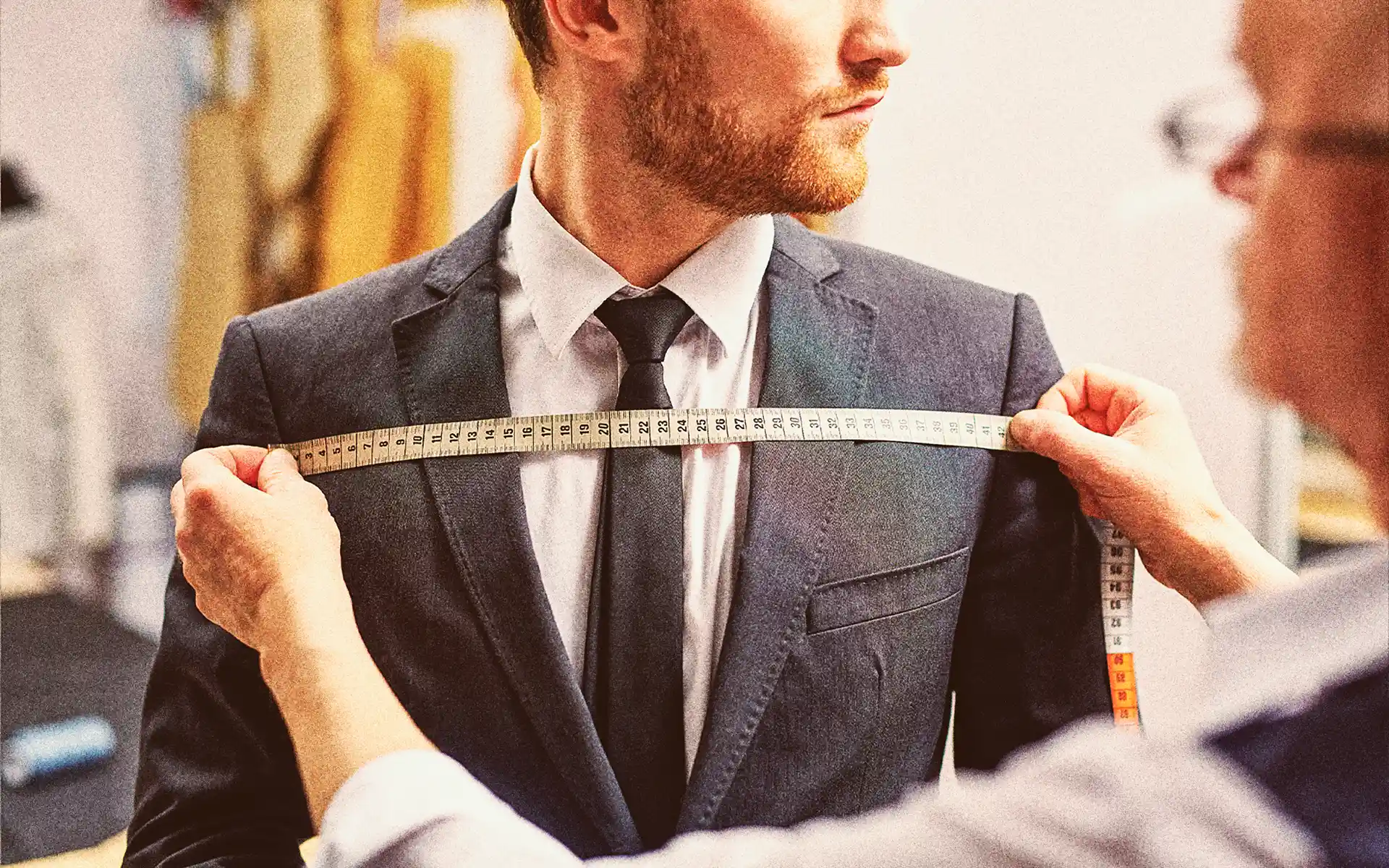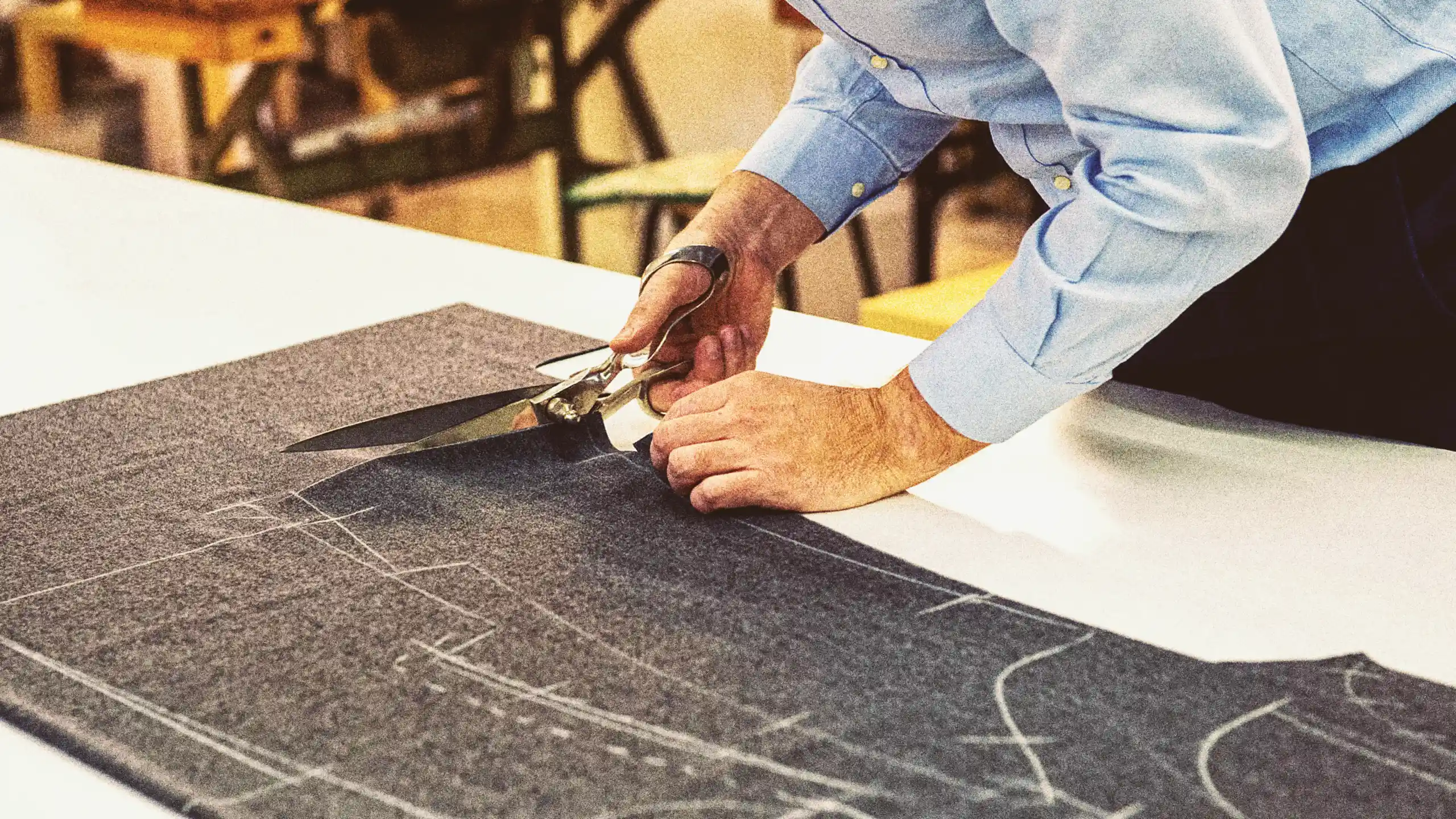Bespoke tailoring is all about creating clothing that fits you perfectly and showcases your unique style. At Gavel, we believe that wearing a custom-made garment isn't just about looking good—it's about feeling confident.
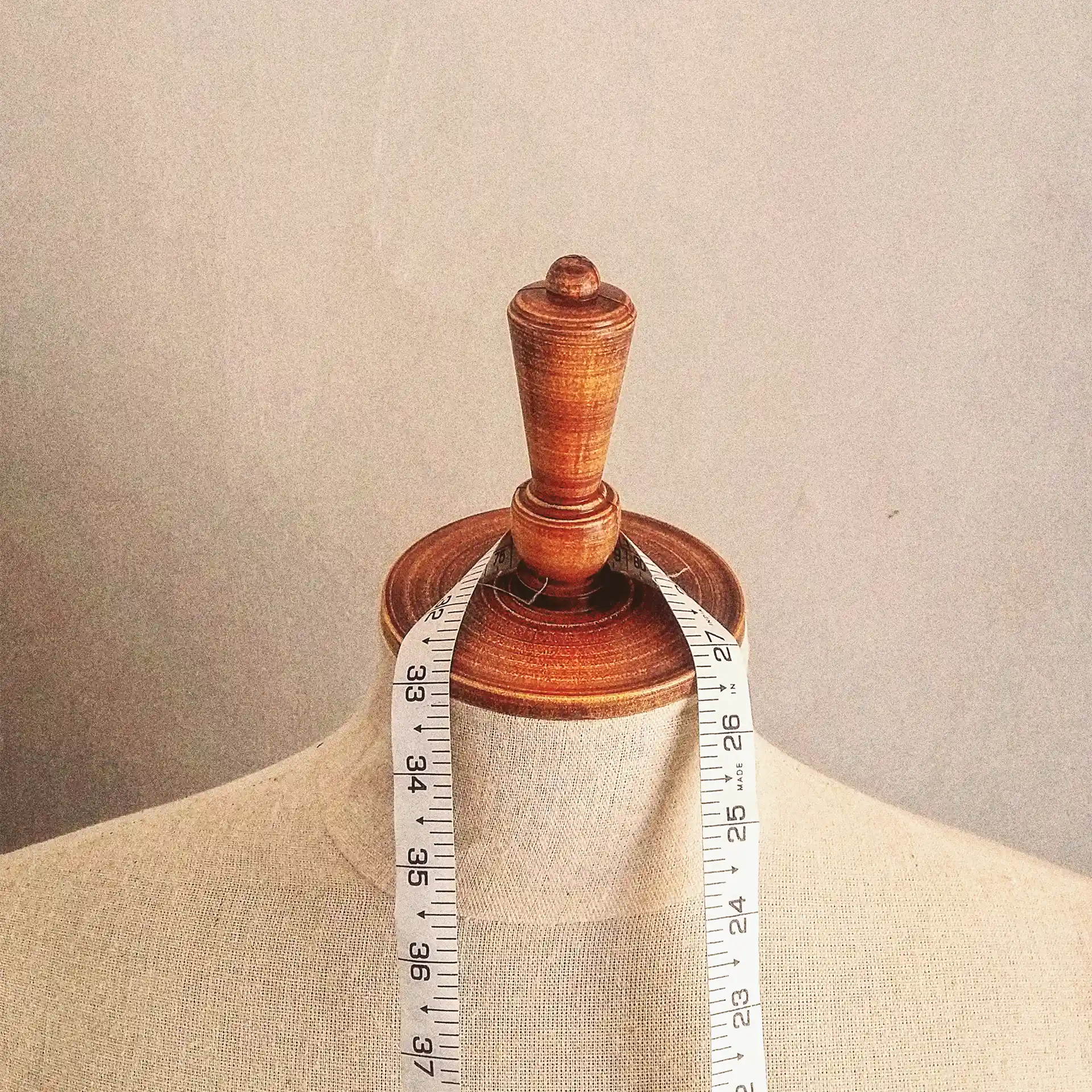

Style Selection and Measurement
After discussing their preferences and receiving recommendations from our stylist, the client chooses the style, cut, main fabric, and lining (type, color, pattern), and individual options: type, quantity, and placement of pockets; type, appearance, quantity, and placement of buttons; placement and type of stitching; shape and size of the collar and lapels, as well as the presence of buttonholes; number of vents; colors of felt, main threads, and button threads; fit of the trousers; and hand or machine embroidery of initials. Once the desired suit is conceptualized, the stylist proceeds to take measurements to determine the necessary sizes and body features for a perfect fit. At this stage, the need and thickness of shoulder pads are also determined.


Pattern Development
Using specialized software, a paper pattern of all details is created, taking into account the client’s body features. The paper suit is assembled on a mannequin to check the alignment of all elements and ensure a perfect fit for the client. A recheck of the balance between the abdomen and back, the calculated seam allowance, the position of the shoulder seams, and so on is performed.
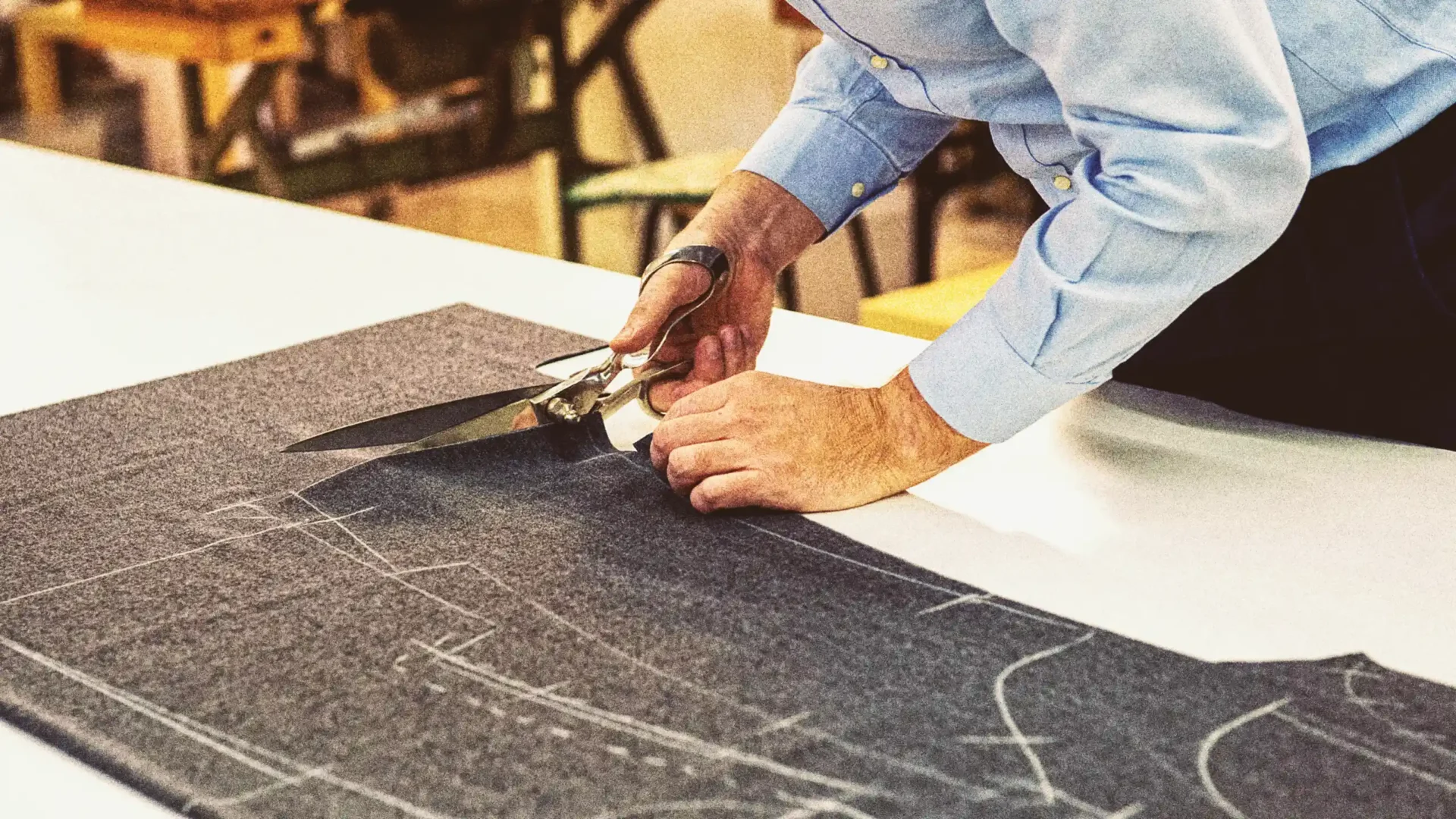
Fabric Cutting
All fabric materials are carefully checked for defects, and the pattern is transferred onto the fabric, adhering to the grain direction to maintain the shape. This is done using a special laser cutting machine or manually, depending on the fabric characteristics and order specifics. If necessary, the fabric is pre-shrunk with steam before cutting to prevent future size changes. If the fabric has a check or stripe pattern, cutting is done to ensure pattern matching at the seams. More main fabric is required for such cutting.
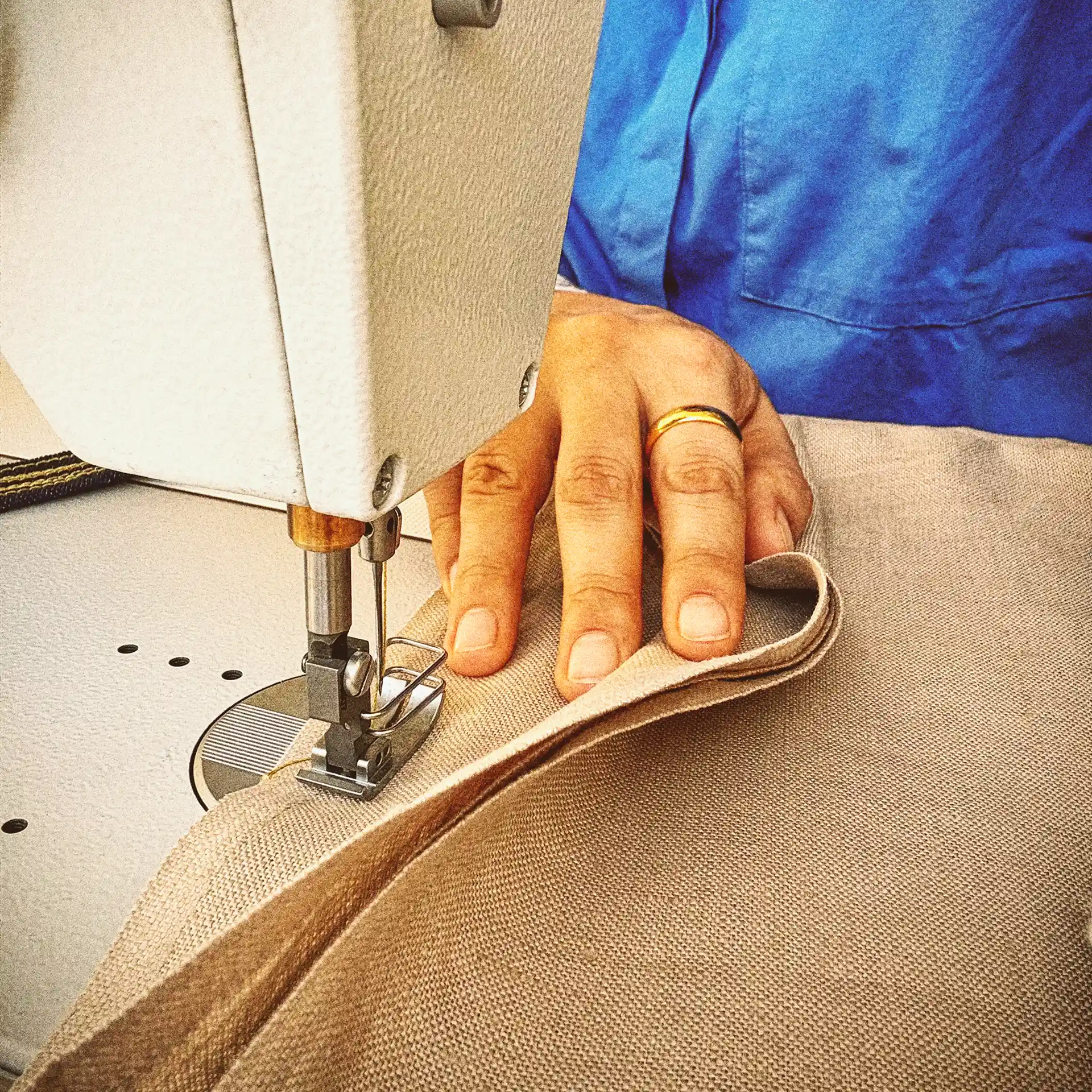

Preparing the Details
First, the details are basted: hand-finishing of edges to prevent fraying and hand-basting of lining materials to ensure shape and stiffness. If desired, basting can be done with contrasting thread to visually emphasize the class of the garment. Then, the main parts are assembled into the final construction: sewing the front and back panels, side and shoulder seams, inserting pockets, and preparing and finishing the lapels and collar.
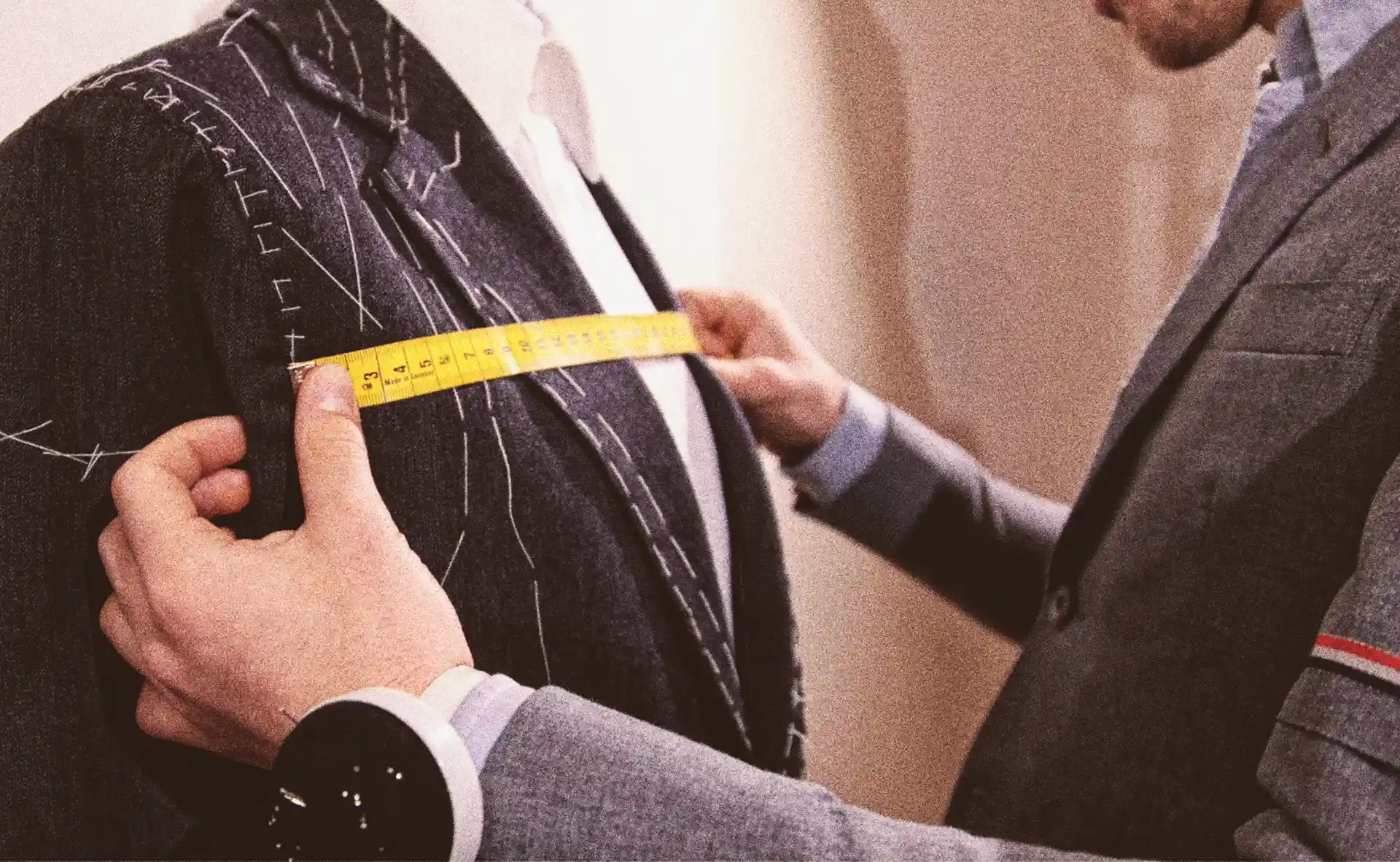

First Fitting
The suit is put on the client to assess the fit and make necessary adjustments. Marking of alterations is made on the suit.


Adjustment, Refinement, and Completion of the Suit
Resewing seams, altering the length of sleeves and trousers, adjusting the shoulders and armholes. Final assembly of all suit elements considering the alterations. Basting and sewing the lining, final insertion of the sleeves, finishing the pockets and collar. Gradual pressing of the suit parts to give them the final shape. Application of steam and pressing to set the folds and curves. Hand-finishing of buttonholes and buttonloops, sewing on buttons. Edge finishing, seam topstitching for a decorative effect. Completion of all small details, checking all seams for durability.
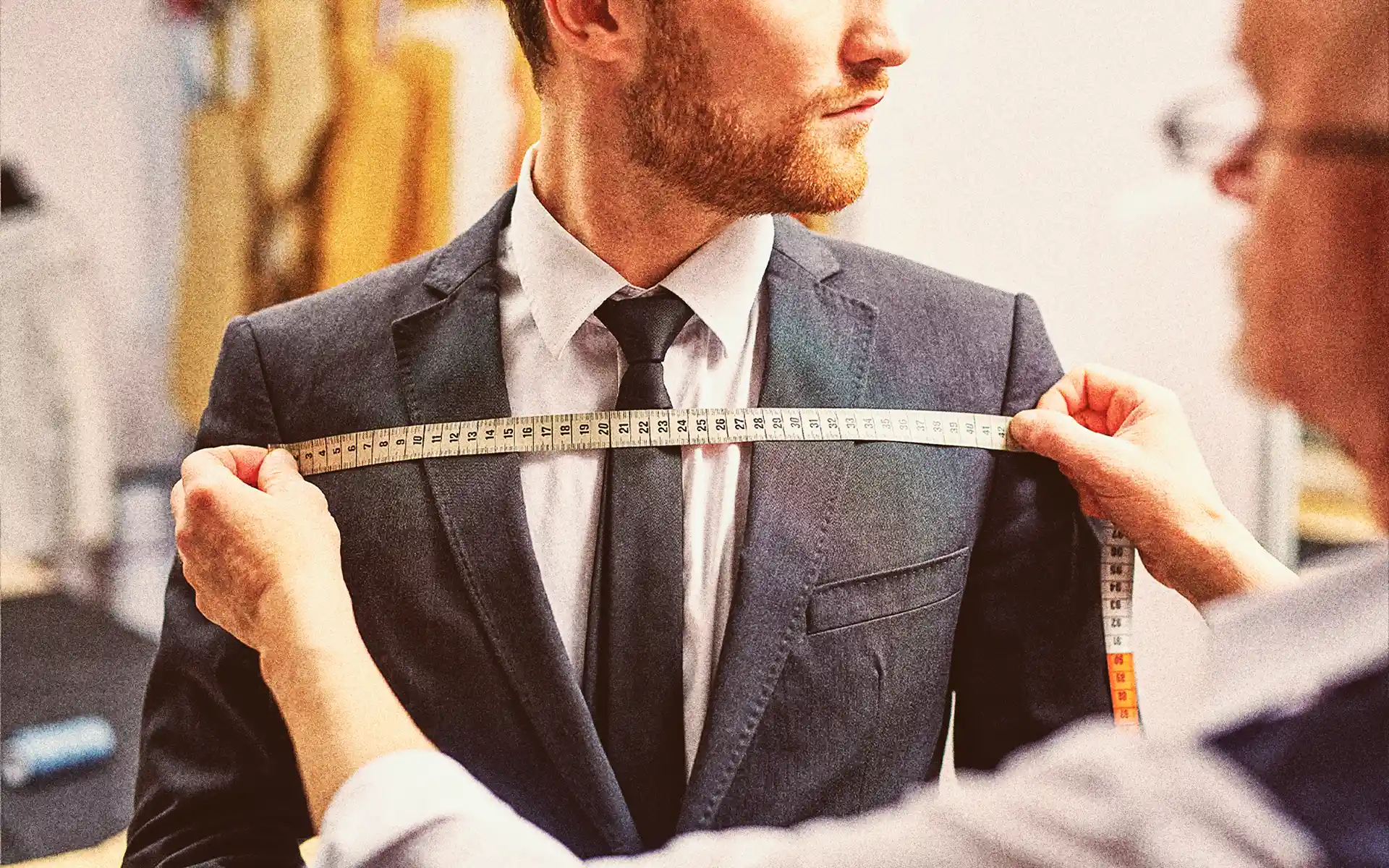

Final Fitting
The completed suit is put on the client to ensure a perfect fit and comfort.
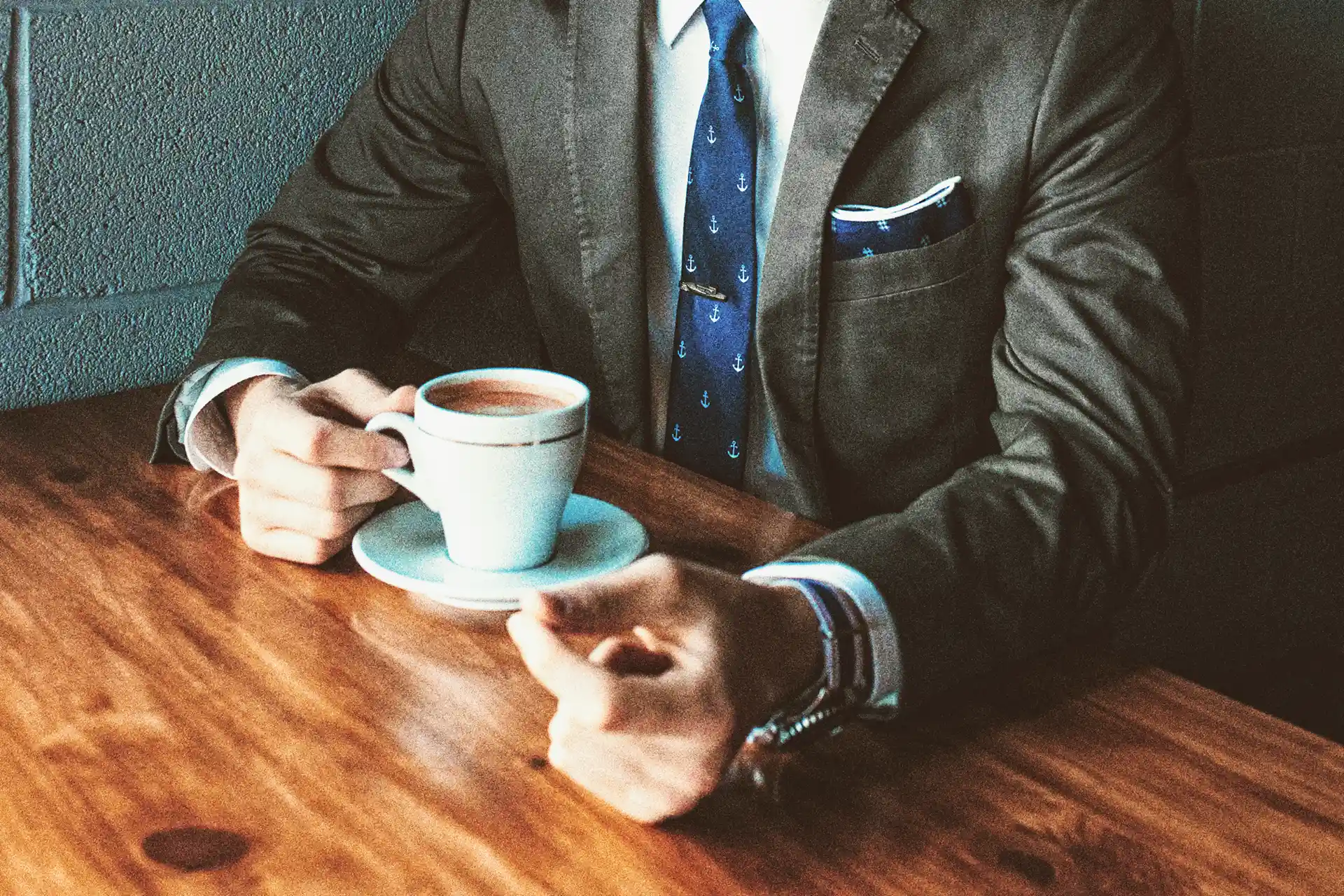

Suit Usage and Feedback
The client wears the suit for its intended purpose and expresses satisfaction with the high-quality garment by leaving online reviews and recommending our suit studio to his friends.
Let’s Tailor Your Perfect Outfit
Whether you need a quick consultation or urgent measurements for your wedding, we are here to help you. Visit our cozy studio in Zurich and discuss your next garment in a relaxed atmosphere.


Marilyn Monroe looked good even in a potato sack. Men, however, need a suit.
suit
Find Your Perfect Suit
Our suits are made for your perfection. We offer suits for any purpose with excellent fit and high quality. You can choose option you need.
